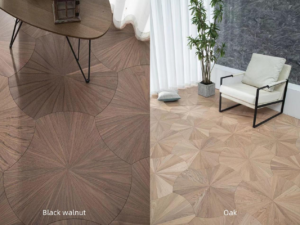Call Us
+8613735147015
What have you done to the back of the wooden floor?
①Opened a Back Groove

When examining engineered wood flooring, You may notice back grooves on the smooth birch underside. You may exclaim, what have we done to the back of the floor?
Oh, don’t worry, we’ve opened an extra back groove for the floor. Everything is to make the floor more stable. Let me explain to you in detail the benefits of opening a back groove.
Wood flooring is highly praised for its timeless appeal and durability. However, one often overlooked but crucial aspect of high-quality wood flooring is the design of the back groove. These grooves located at the bottom of each board play a certain role in ensuring the long-term stability of the floor.

1. Enhancing Stability and Durability
Positioned at the base of each board, these grooves mitigate the effects of temperature and humidity-induced expansion and contraction. This design minimizes the risk of warping or bending, ensuring the long-term structural integrity of the floor.
2. Improved Air Circulation
An important advantage of back grooves lies in their promotion of air circulation beneath the floor. Improved ventilation regulates humidity levels, prevents condensation, and reduces the likelihood of mold or mildew growth. Enhanced air circulation contributes to maintaining a healthy indoor environment within the flooring structure.
3. Simplified Installation and Maintenance
The presence of back grooves streamlines both installation procedures and ongoing maintenance. These grooves facilitate adhesive application and installation methods, ensuring a safer and more efficient installation process. Additionally, accessibility for maintenance and repairs is enhanced, resulting in minimal disruptions and simplified interventions when necessary.
4. Noise Reduction
The grooved design of the back of the floor effectively minimizes noise generation, particularly during use and walking. By incorporating back grooves, noise levels are significantly reduced, supporting sustainable and comfortable floor usage.
5. Customization for Diverse Needs
The decision to utilize back grooves should be based on specific requirements. For instance, in markets like Korea where underfloor heating is prevalent and board thickness is typically around 12mm, incorporating back grooves is essential.

After reading the article, are you feeling relieved? Everything is for a better floor, for everything better about the floor. This is the aim of Kelai Wood. Next installment, you’re afraid you’re going to be nervous again? We’re going to have another go at the back of the floor. What is it? Stay tuned.




